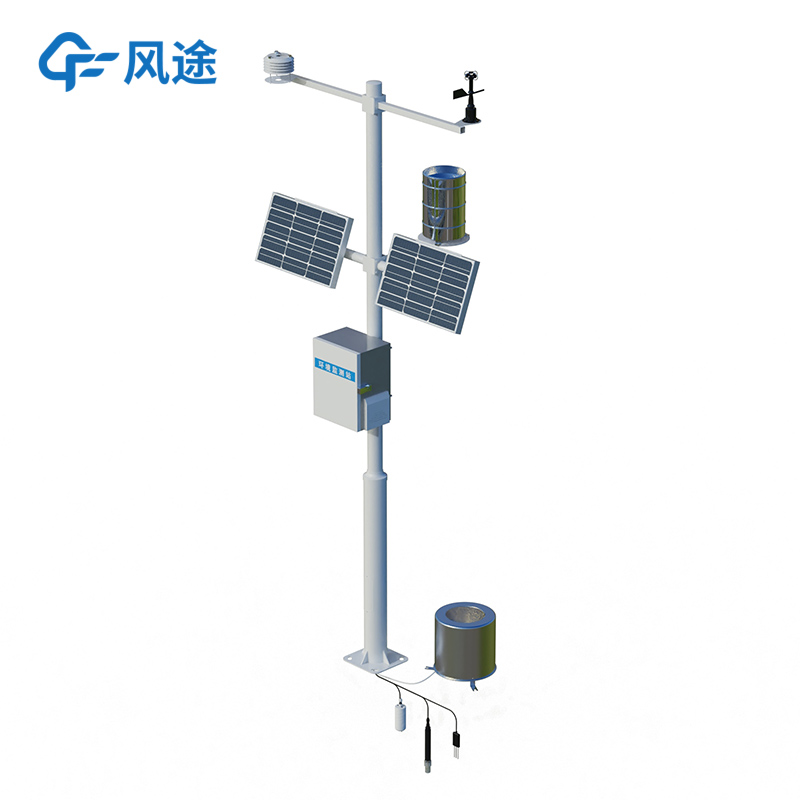In traditional agricultural production, "relying on the weather for food" is a helpless choice for farmers. The quality of the weather directly affects the growth and harvest of crops, and farmers often can only passively respond to meteorological changes. Nowadays, the Farmland Weather Station, with its continuous and stable monitoring capability, is helping agriculture transform from "relying on the weather for food" to "managing according to the weather".
The Farmland Weather Station is a device specially used to monitor and record farmland meteorology. It consists of meteorological sensors, meteorological data collectors, a management cloud platform, and an APP. Equipped with two power supply modes: solar energy and rechargeable batteries, it can be directly installed in farmland to conduct long-term and uninterrupted monitoring of meteorological parameters such as air temperature, humidity, light intensity, rainfall, wind speed, and wind direction. The monitored data is uploaded to the cloud platform through wireless communication, making it convenient for users to check at any time.
Through real-time monitoring of farmland meteorology, the weather station can timely detect early warning signals of meteorological disasters, helping farmers prepare in advance and improve the disaster resistance of agricultural production. For example, before the arrival of disastrous weather such as heavy rain, strong wind, and hail, the weather station can detect abnormal changes in relevant meteorological elements in advance, and send early warnings to farmers in a timely manner through text messages, APP pushes, etc. This allows farmers to take protective measures such as reinforcing greenhouses and dredging ditches, minimizing disaster losses.
The Farmland Weather Station can also provide early warning information on the occurrence of diseases and pests. The occurrence of many diseases and pests is related to meteorological conditions. By monitoring and analyzing meteorological data such as temperature, humidity, and light, the weather station can predict the occurrence trend of diseases and pests, reminding farmers to take timely prevention and control measures to reduce the damage of diseases and pests to crops and ensure the healthy growth of crops.
With accurate meteorological data, farmers can scientifically adjust agricultural activities such as irrigation, fertilization, planting, and harvesting. During drought periods, based on the soil moisture and precipitation forecast data provided by the weather station, farmers can reasonably formulate irrigation plans to ensure that crops receive sufficient water while avoiding waste of water resources. In the fertilization process, combined with meteorological conditions such as temperature and light, farmers can choose the best fertilization time and amount to improve fertilizer utilization and promote crop growth.
In a major grain-producing area, the local meteorological department has installed weather stations in multiple farmland areas to build a sound meteorological monitoring network. By analyzing and integrating meteorological data, the meteorological department can provide farmers with personalized agricultural advice. During the critical growth periods of crops, such as the heading stage of rice and the filling stage of wheat, the weather station monitors meteorological conditions in real-time. Once there are abnormal data, the meteorological department will quickly send early warning information to farmers and give corresponding management suggestions, helping farmers achieve a steady increase in grain output.
The Farmland Weather Station, with its 24-hour uninterrupted monitoring capability, provides accurate and timely meteorological information for agricultural production, helping farmers transform from "relying on the weather for food" to "managing according to the weather", and providing scientific and technological guarantees for the high-quality development of agriculture and food security.

Article address:https://www.sqqx.net/en/news/690.html

 +86 15898932201
+86 15898932201



